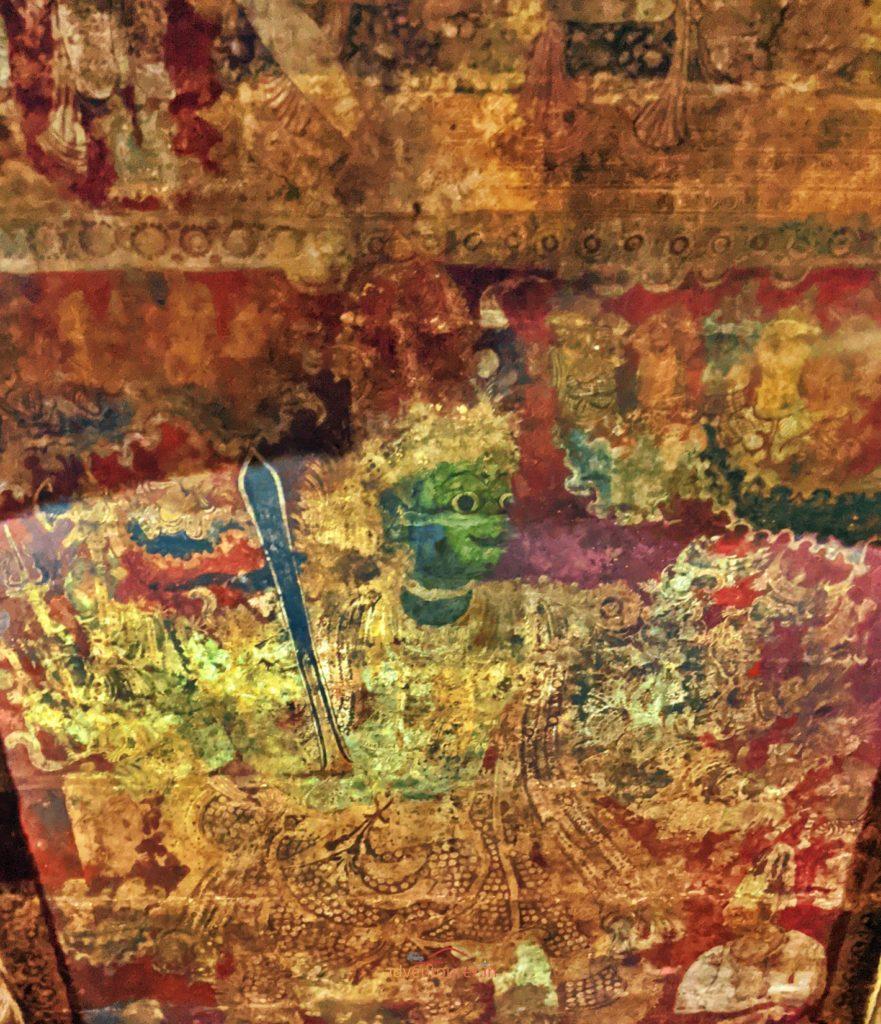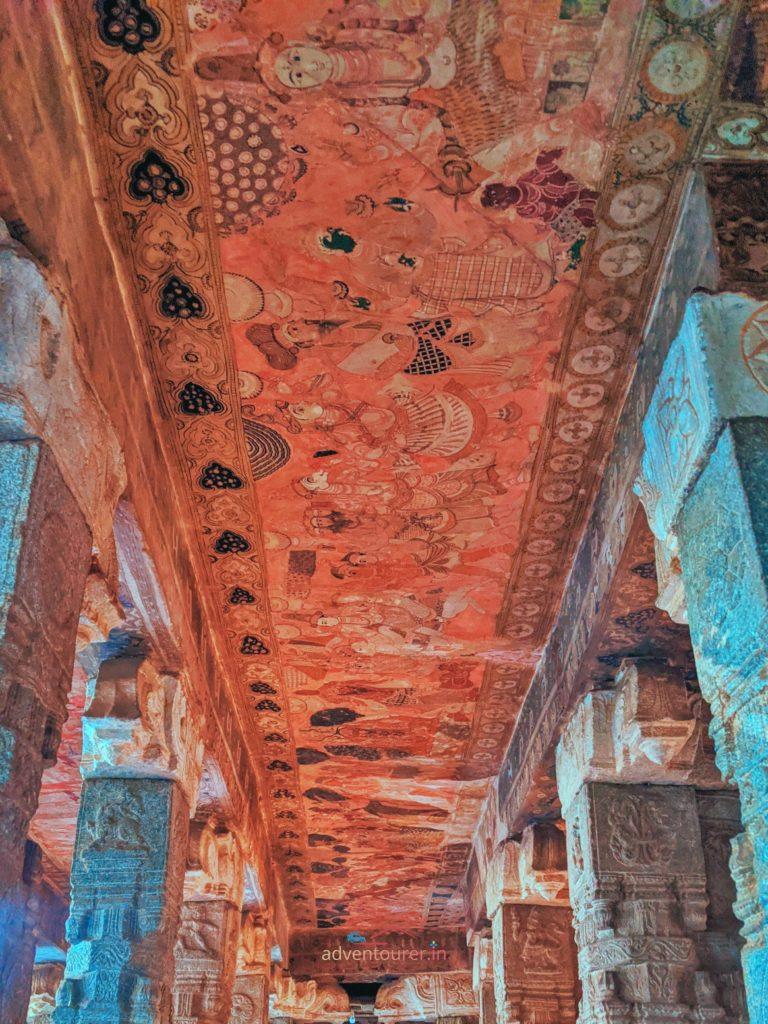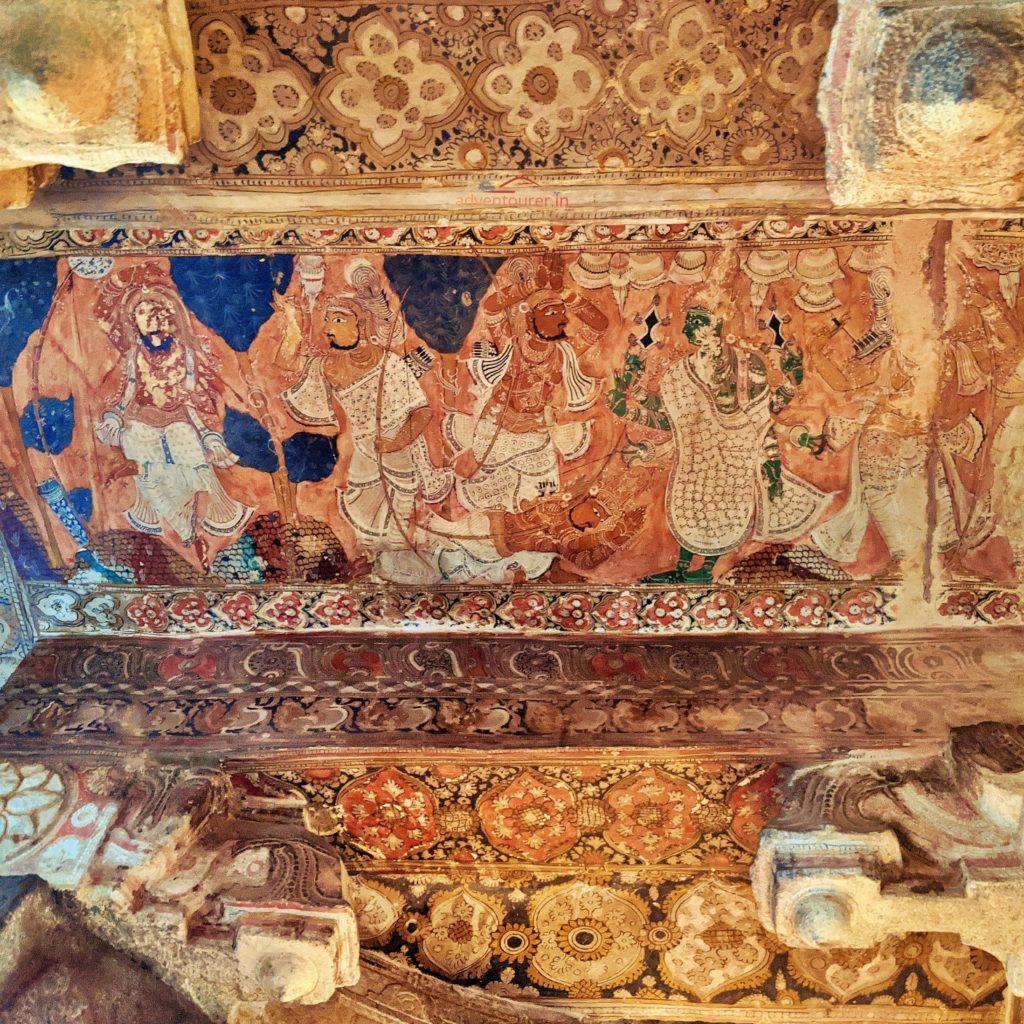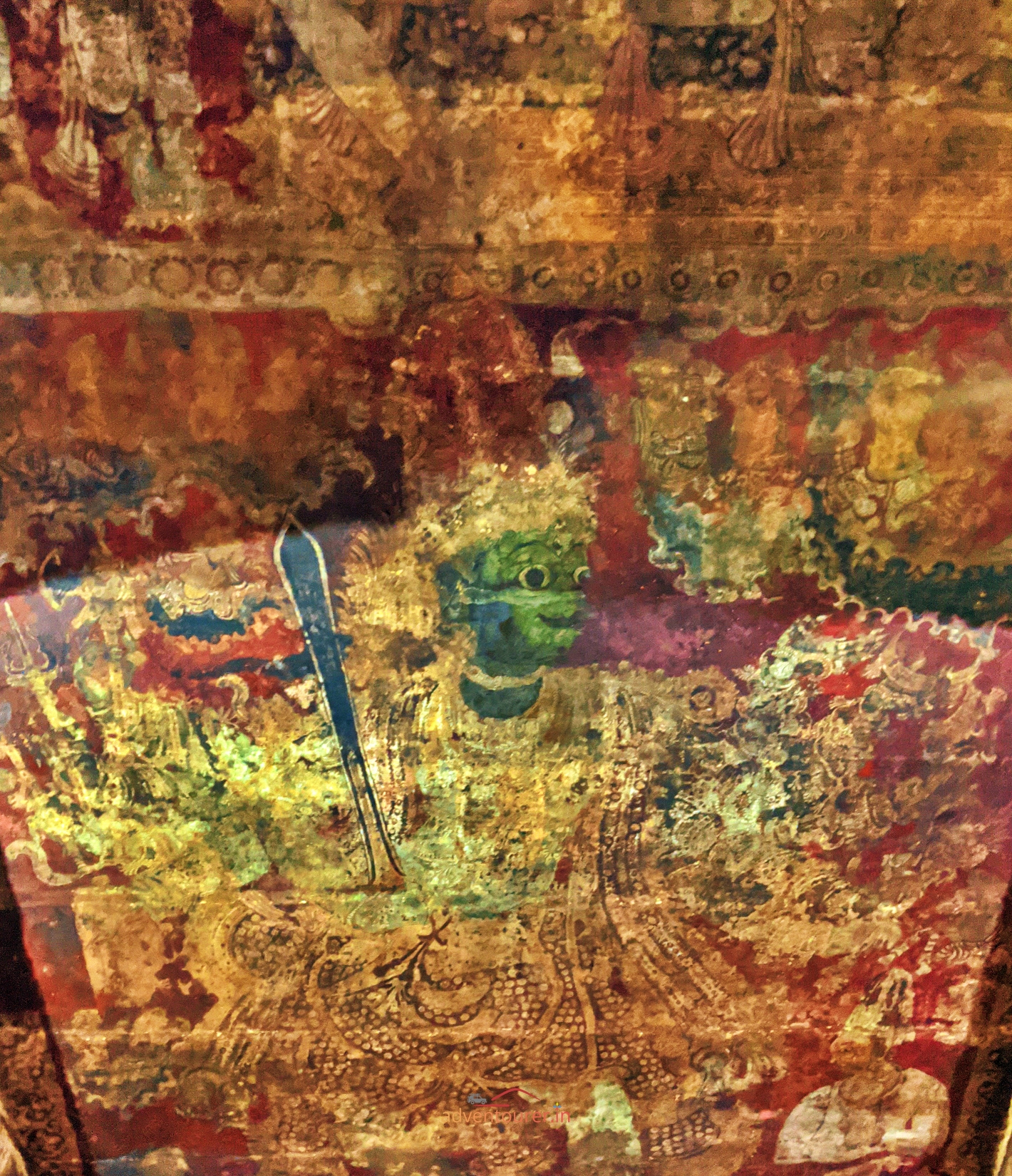You would have seen some of the great piece of art hung on a wall at a gallery or a museum. Sometimes the wall itself is a canvas. But, here at Veerabhadra temple, Lepakshi, all you have to do is to look above to witness the greatest art from the bygone era.
The Veerabhadra temple is a treasure of the finest mural paintings of the Vijayanagara era.
The mural paintings can be seen on ceiling of the Veerabhadra temple, mahamantapa of the Raghunatha temple, Parvathi temple, and shayana mandira (shayanagara).
As you enter inside the Veerabhadra temple, the intricately carved pillars with dancers, musicians with various musical instruments in the Ranga mantapa (the main hall or mukha mantapa) welcome you.
The mural paintings in each bay on the ceiling of Ranga mantapa, the antarala, and other shrines depict the grandeur of Vijayanagara pictorial art. They are painted over an initial plaster layer of lime mortar. The color scheme consists of vegetable and mineral colors of yellow, ochre, black, blue and green blended with lime water; the background is generally painted in orange-red color. The black lime work and orange-red background provide a striking contrast to the paintings. These mural paintings depict various forms of Lord Shiva and episodes from the Shiva purana. Apart from figures of gods and goddesses, in the presence of the devotees arranged in rows, the frescoes also depict the incarnations of Vishnu. The paintings are in striking compositions where the particular emphasis is on the period costumes and facial expressions.
The 24×14 feet fresco of Veerabhadra, the fiery form of Shiva, on the ceiling in the ardha mantapa (before the main sanctum) is the largest in India.



These frescoes are peeled off at many places. They are deteriorating due to water seeping and and exposure to elements. The Archeological Survey of India is taking steps to protect these paintings by way of a chemical treatment on the surface and plugging holes on the roof to stop further deterioration of the quality of the murals.
If you are awestruck by the mural paintings and sprain your neck looking up the ceiling, it is time to kneel down to witness the wonder of the Vijayanagara architecture. Head to the Ranga mantapa, towards the star attraction of this temple Akasha stambha, most popularly known as The Hanging Pillar, which barely rests on the ground.
Have you been to Veerabhadra temple, Lepakshi, and seen these mural paintings on the ceiling of the temple?
